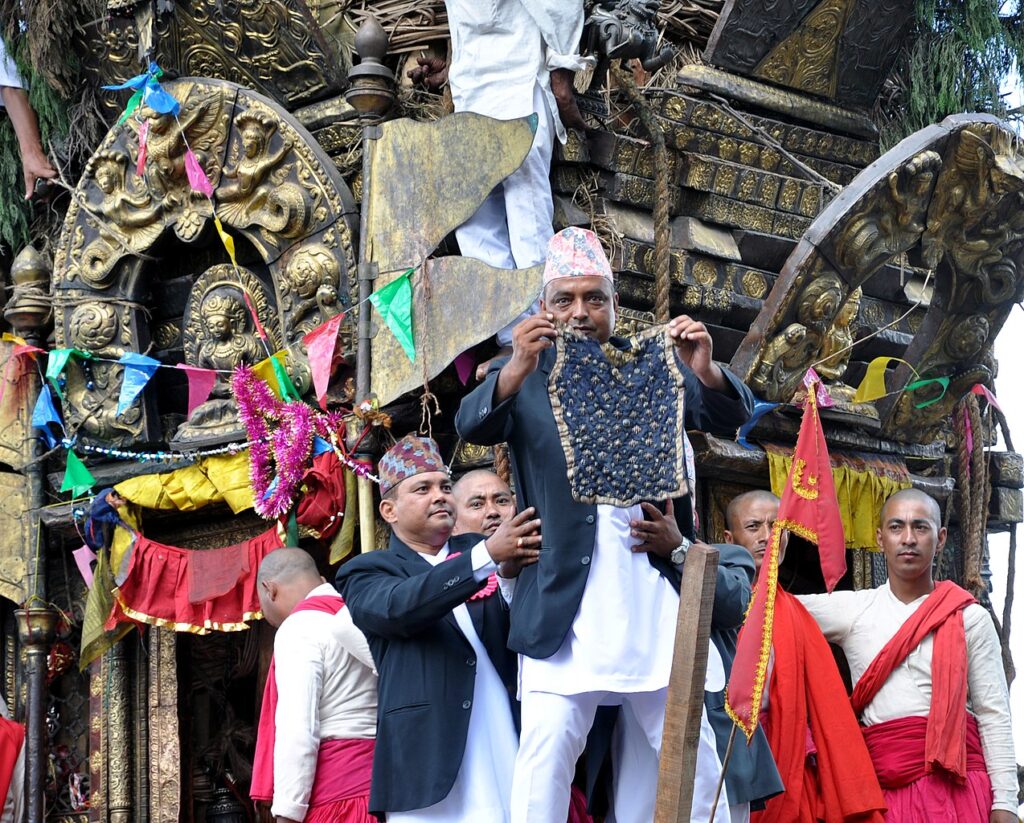Yomari Punhi
Honoring the Newar traditions with delicacies, rituals, and community bonding on the full moon day of Thinlā.
About Yomari Punhi
Yomari Punhi is a unique festival celebrated by the Newar community in Nepal. It is observed on the full moon day of Thinlā, the second month of the Nepal Sambat calendar, which falls in November or December of the Gregorian calendar. This festival marks the end of the rice harvest season and provides an opportunity to express gratitude to the deities for their blessings.
The name “Yomari Punhi” translates to “Full Moon of Yomari.” According to legend, Yomari originated in Panauti, a small town near Kathmandu Valley. It is said that a couple named Suchandra and Krita first prepared this delicacy and offered it to the gods. Pleased by their offering, the gods declared Yomari a symbol of prosperity. Since then, it has been an integral part of this harvest festival.
The heart of the celebration is the preparation of Yomari. This steamed dumpling is made from freshly harvested rice flour. The dough is shaped into a fish-like or conical form and filled with a sweet mixture of chaku (molasses) or khuwa (milk solids). Some variations include sesame seeds or coconut fillings. Beyond its delicious taste, Yomari is regarded as auspicious and symbolizes fertility and good fortune.
The distinctive shape of Yomari holds cultural significance. Its pointed design is said to represent fertility and abundance. The festival emphasizes values of gratitude, family bonding, and cultural preservation, making it a cherished tradition in the Newar community.
Rituals and Celebrations
During Yomari Punhi, families gather to prepare Yomari together. The festival is deeply rooted in communal harmony and sharing. Key rituals include:
- Worship of Annapurna: The goddess of grains and food, Annapurna, is worshiped on this day. Devotees seek blessings for a bountiful harvest and prosperity.
- Sharing Yomari: After preparation, Yomari is shared among family members, neighbors, and friends, symbolizing unity and goodwill.
- Children’s Songs: In some Newar neighborhoods, children visit homes singing traditional songs and asking for Yomari, adding a joyful element to the festival.
- Traditional Performances: Traditional Newar music and dances are performed in some areas to mark the occasion.
Activities on Yomari Punhi Day
The day of Yomari Punhi is filled with activities reflecting the cultural and spiritual essence of the festival. From morning to night, people engage in the following:
- A Day Before: The day before the festival, homes are cleaned thoroughly, especially the prayer rooms, in preparation for the rituals.
- Morning: The day begins with setting up offerings and worshiping household deities. Fresh ingredients for making Yomari are gathered.
- Midday: Families come together to prepare Yomari. The process involves kneading rice flour, shaping the dumplings, and filling them with sweet or savory ingredients. Elders often guide younger members in mastering this traditional skill.
- Afternoon: The prepared Yomari is steamed and offered to Annapurna and other deities during prayers. Special rituals are performed to express gratitude for the harvest season.
- Evening: After the rituals, Yomari is distributed among family, friends, and neighbors. Children often visit homes, singing songs and receiving Yomari as gifts. Community gatherings and traditional performances bring everyone together.
- Night: Families enjoy a festive meal with Yomari as the centerpiece. The day concludes with storytelling, singing, and spending quality time with loved ones.
Conclusion
Yomari Punhi is not just a celebration of food but a reflection of the rich traditions and values of the Newar community. It beautifully showcases the harmony between humans and nature through its connection to the harvest season. Visitors to Nepal during this time can witness the cultural vibrancy and even join in the festivities to savor the delightful Yomari. This festival remains a testament to Nepal’s diverse and colorful cultural landscape.
Share it :

